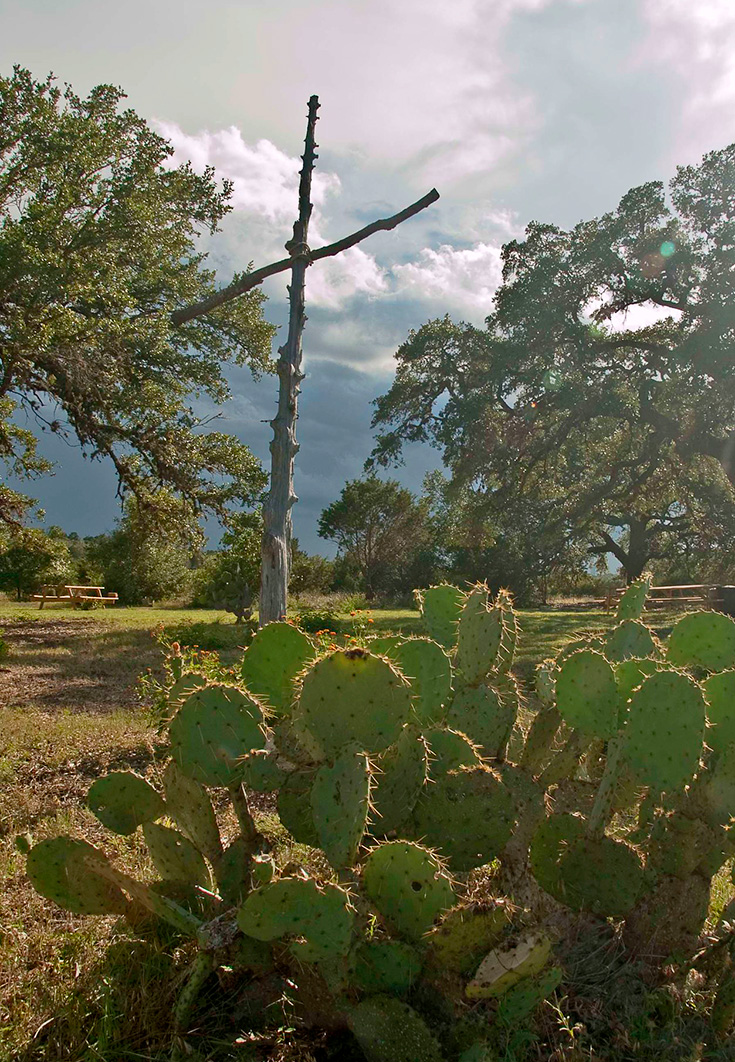Several years ago I went to an informal service of worship led by a Franciscan Catholic in central Arkansas. Most of the evening, in the cavernous fellowship hall of the church, we sang simple praise choruses accompanied only by the leader’s guitar. Midway through the service, though, the leader paused, put down the instrument, and spoke to us briefly about the spiritual life.
“How does your Christian tradition observe the Lord’s Supper?” he asked and waited, giving us time to reflect.
He went on to describe a Baptist way with which many of us Protestants in the audience were familiar. Worshipers remain seated in their pews while two trays are distributed: one with little squares of saltines, and the other bearing thin plastic thimbles of grape juice. You wait expectantly as you see the trays wending their way from the front, down each row and around to the next, like a thread zig-zagging its way along a seam.
Then the worship leader described the Catholic way (shared, of course, by many other liturgical traditions). Worshipers walk to the altar rail and kneel to receive the wafer the priest places on your upturned palm. You hold the common cup as the priest tips it toward your mouth, and the wine is sharply sweet, washing down the taste of the bread.
Both of these traditions say something to us about following Jesus, the worship leader said. In the Baptist tradition, you see a picture of Christ seeking us. We don’t have to do anything special to prepare ourselves. We aren’t asked to perform some heroic effort. Jesus slowly works his way toward us, like those trays gradually snaking from pew to pew. “Blessed are those servants whom the master finds awake when he comes,” Jesus says, speaking of his disciples and himself. “Truly, I say to you, he will dress himself for service and have them recline at table, and he will come and serve them” (Luke 12:37).
There’s a powerful picture of our life with Jesus in the Catholic tradition, too. As people file out of their pews, join the line in the aisle and walk toward the altar, we catch a glimpse of what it looks like to say yes to Jesus’ call of discipleship. Like Peter and the others who left their fishing nets on the shore of the Sea of Galilee, so we get up out of our seats to go and search for him. “Come and you will see,” he beckons (John 1:39). And what we find when we arrive and kneel is not some herculean requirement that we’re expected to fulfill. All we have to do is cup our hands, open our mouths and taste what he gives us.
A couple of years after hearing this talk, I found myself at a Presbyterian church in a Chicago suburb. The church observed communion according to the “Scots’ form.” We all walked forward to partake, but instead of kneeling at an altar rail, we sat down at two long banquet tables spread with brilliant white tablecloths. As we ate crumbs of bread and drank wine served by the church elders who called the members of the congregation by name (“Michael, this is the body of Christ, broken for you”), we looked around at each other’s faces. It was probably old hat to the regulars, but for me it was deeply moving -- and enacted yet another truth about our discipleship, the solidarity and siblinghood that we enjoy as Jesus’ followers.
I don’t want to paint too rosy of a picture here. These different forms of communion mark divisions between Christians. But even though I long to see the ecumenical reunion of God’s people as much as anyone, I sometimes feel that the worldwide family of God would be impoverished if we were to lose any of these varying traditions. Just as the parts of a good choir depend on one another and highlight one another’s giftedness, so we too, with all our ways of joining the Lord at his table, may be able to help each other “comprehend… what is the breadth and length and height and depth” of God’s love. Our diversity points to its manifold beauty.
Wesley Hill is a PhD student in the Department of Theology & Religion at Durham University in the U.K. You can follow him on Twitter at @wesleyhill.






